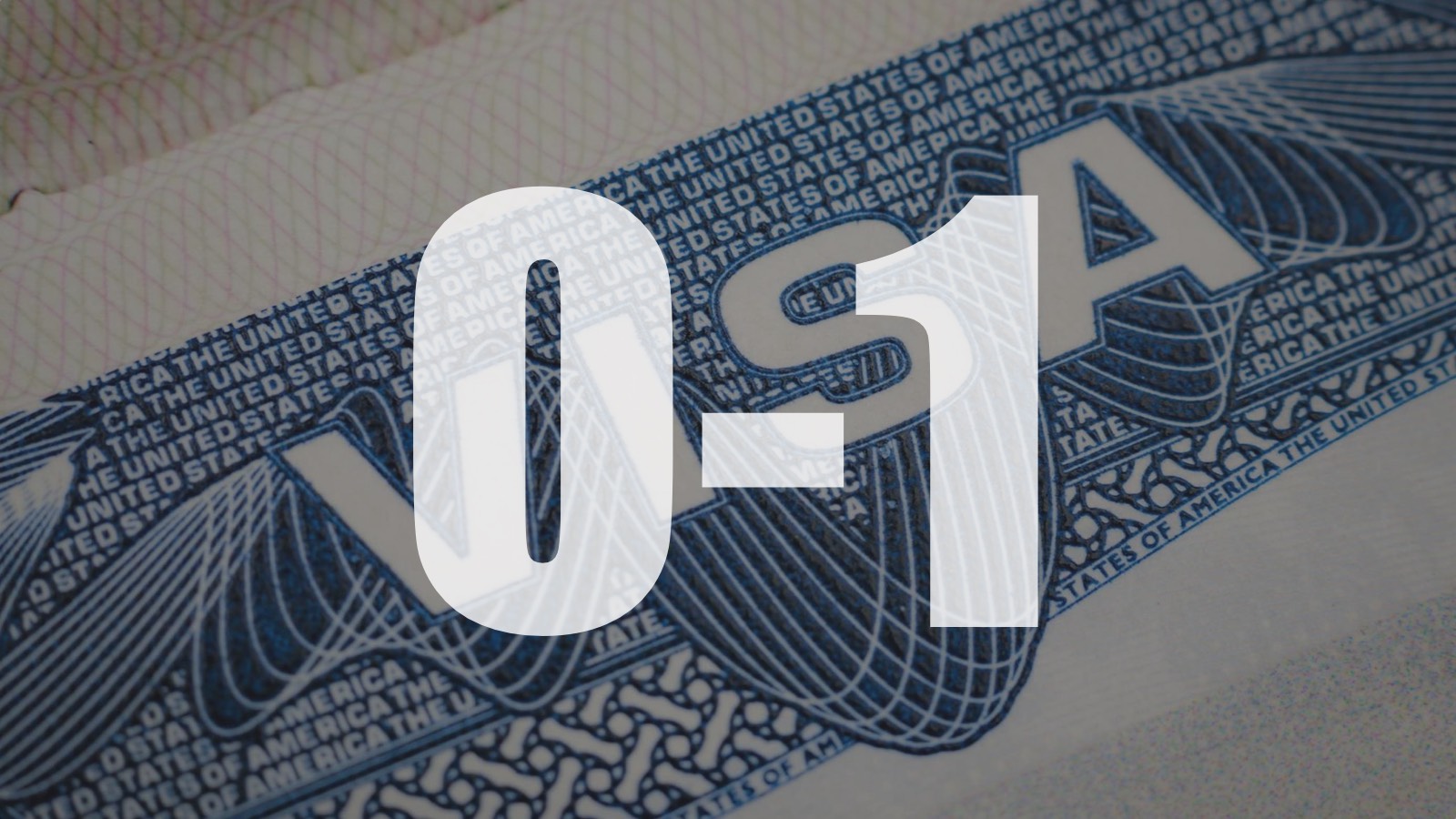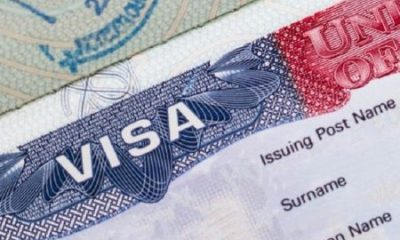Visa
The Complete Guide: O1 Visa – Application, Extension, Transfer, Benefits

A unique O-1 visa is available to non-immigrant workers entering the US for a project, job, or performance. O-1 visa holders have various advantages over other work visas.
There is no yearly limit on O-1 visas, however the government limits other nonimmigrant work visas. Generally, O visas are given swiftly.
There’s no limit stay for O visa holders either. The alien’s work requires an O-1 visa for up to three years. You can request unlimited one-year extensions. You can bring immediate family, the holder’s spouse, and children to the US, but they cannot work.
What is an O-1 Visa?
An O-1 nonimmigrant visa, sometimes known as an O-1 visa, is a visa that allows those with exceptional skill, acclaim, or success to enter the United States. Individuals that qualify may have received acclaim in the fields of science, art, education, athletics, or business. Individuals with national or international recognition in certain professions may be eligible for a special visa.
O-1 Visa holders frequently travel with relatives, teams, or associates who have their own visa classes. The O nonimmigrant categorization is divided into numerous groups, the most important of which are as follows:
- O-1A for anyone with extraordinary abilities in science, athletics, business, or education. The A classification excludes the arts, television, and movies.
- O-1B for anyone with abilities associated with the arts including television and movie production.
- O-2 visas are only available to people who accompany O-1 visa holders. This could include someone who aids an athlete or performer during a certain event’s practice or performance. Qualifying O-2 holders must have a “integral part” in assisting the job that will be done in the US for O-1 assistants. The O-2 visa holder must also have particular abilities and work experience with the O-1. It should also be obvious that this position cannot be easily filled by a person who is already in the United States.
- O-3 Visas are for the family members of the O-1 or O-2 holders. This is specifically reserved for spouses and children.
O-1 Visa Qualifications
Providing national or worldwide recognition or acclaim shows “extraordinary ability” for an O-1 Visa. The O-1 Visa approval rate is low despite the requirements, yet it’s worth applying. You must also keep working in that industry. In this example, remarkable has specific definitions despite being subjective.
In science, business, athletics, and education, “extraordinary abilities” indicates you have proven competence that sets you apart from others. This signifies you are among the industry leaders.
The arts define “extraordinary ability” as fame or distinction. This indicates your expertise has garnered you arts community recognition. Famous or influential artists may qualify.
In film and TV, you must be well-known in your industry. Your work has been so exceptional that the industry has recognized you. If your previous work has earned you demonstrable recognition, you may qualify.
In each category, you can show your outstanding status through industry accolades, notable achievement, or unique expertise.
Applying for an O-1 Visa
Applying for any visa requires attention close attention to detail; if you make a mistake or improperly represent yourself your 0-1 visa will be denied. The O-1 Visa application starts with a Form I-129, Petition for Nonimmigrant Worker and sent to the United States Citizen and Immigration Services. The form should be submitted no earlier than a year before it’s needed and no later than 45 days before your entry into the country.
Consultation Requirement
The Form I-129 must also include a consulting opinion that verifies the alien’s outstanding ability and details the O-1 Visa holder’s anticipated employment. The consultant must be a “peer group” or an expert.
A field’s labor union or guild is a peer group. For instance, instrumentalists can contact the American Guild of Musical Artists. If there is no guild or labor union, use a person with competence in the alien’s fame.
Send the USCIS the original version with the watermark if the consultant employs one to verify their validity. Copy and store for your records. Sending a copy of the watermark or a version without a watermark may appear fraudulent or inauthentic.
Consultation Exceptions
Some relevant conditions exempt the consultation obligation. If you can prove there is no peer group or labor organization in your field, you may not require the consultation. Your proof will determine the outcome.
If you’re an artist and have visited the US on an O-1 Visa, your consultation may be waived. If it has been less than two years since your last consultation and you want to be readmitted, the USCIS can waive the second consultation.
O-1 Visa Petitioner and Beneficiary Contract
O-1 petitioners are usually employers or colleagues seeking to bring extraordinary aliens to the U.S. for work or performance. A copy of the petitioner-visiting alien contract proves the employment arrangement. A written summary of an oral agreement is also possible.
If you summarize an oral agreement instead of a formal contract, include anything that verifies or clarifies the terms. Send copies of email agreements as proof. Otherwise, summarize the arrangements, including what the company provided and what the visiting employee accepted.
O-1 Visa Extension
You can stay in the US as long as your event requires with an O-1 petition. Known as validity period. You have 10 days in the US before and after the validity period.
Initial stays are limited to three years. If your permitted employment requires extra time, you can extend your stay. O Visas allow unlimited stay extensions, which is unique. To avoid extension denial, your O-1 visa extension application must be full and strong.
To apply for an extension you will need to send three documents to the USCIS:
- A Form I-129, Petition for Nonimmigrant Worker. This form has several purposes, one of which is extending the time an O-1 Visa holder can be in the US.
- A copy of the Form I-94, Arrival and Departure Record that the visa holder was given when entering the US (possibly on the plane). This is the form that any non-citizen has to fill out when entering the country. It has a record of your arrival date and your originally scheduled departure date.
- A statement from the employer that details why the period of stay needs to be extended. This needs to be a detailed reason why the project was delayed or needs to take longer.
If the beneficiary has a spouse or children with them, they must also file a Form I-539 Extend/Change Nonimmigrant Status. This should ideally be filled at the same time.
Transfer Your O-1 Visa Employer
Your new O-1 Visa employer must file Form I-129 to change employment. File this form if your work undergoes a “material change”. This term refers to any substantial change in your work or workplace.
A promotion or demotion, a raise, or a shift to a new office are material changes.
If you are fired for anything other than resigning, your company must pay for your return home before entering the US. If an agent submitted the petition, the employer and agent divide transportation funds.
How Much Does it Cost?
Compared to other nonimmigrant visas, the O-1 is cheap. The petitioner must pay the $460 I-129 petition filing fee and $190 DS-160 online application cost (only if you are outside the U.S. and going through consular processing). Premium processing will speed up I-129 processing from six months to 15 days for $1,225.
Overall, O-1 visas cost $460–$650 without premium processing. O-1 fees are cheaper than H-1B fees of over $6,000 and E-2 visa investments of $150,000.
O-1 Visa to Green Card
The term “dual intent” refers to a nonimmigrant visa that allows the holder to pursue lawful permanent resident (green card) status. Not all visas are dual-purpose. J-1, TN, and B-1 visas are exceptions.
Your status will not be changed by filing a green card petition because the O-1 is a dual-intent visa. This is the most beneficial O-1 visa perk for many. How to move from O-1 to green card to permanently reside in the U.S.
Determine which green card you want first. Most O-1 holders select EB-1A for extraordinary aliens or EB-1B for outstanding researchers and educators since the standards are identical. Neither green card requires a PERM Labor Certification, and the EB-1A does not require a job offer or sponsoring employer, which is a significant perk and lets you carry over O-1 visa privileges. The EB-2 green card requires a PERM, job offer, and sponsor.
After choosing a green card, file an I-140 petition. You or your employer, depending on your green card, since your O-1 agent cannot petition. Once USCIS receives your petition, that date becomes your priority date. Keep up with the monthly visa bulletin‘s final action dates. Once the final action date for your green card category and country matches or passes your priority date, you will receive a visa number and can proceed.
When your priority date is current, you can file an I-485 and pay USCIS costs to switch from O-1 to green card status. Depending on your green card and the visa bulletin’s final action dates, this process can take years or months. Ask your immigration lawyer about your situation.
Assistants and Family Members
Another O-1 visa bonus is that your spouse and unmarried children under 21 can accompany you under O-3 status. They will have the same visa validity as you, and any O-1 extension you acquire will be given to your O-3 family.
O-2 status allows you to bring needed aides to the U.S. Like O-3 relatives, their status depends on you. If your status increases, so will theirs. Their status is affected by your status revocation. Additionally, O-2 holders can bring their own O-3 family members.
O-2 and O-3 holders can become lawful permanent residents, which we’ll discuss next.
How Long is the O-1 Visa Validity Period?
This is where the O-1 visa perks really shine. Most other visas have a maximum stay period. The H-1B visa allows you to stay for six years, the L-1 for five to seven years, and the J-1 for five years on average. In contrast, the O-1 visa permits for a three-year initial stay with unlimited extensions. In essence, you can stay and work in the United States as long as you have O-1 status and complete the requirements for an O-1 renewal. These extensions are provided in one-year increments, but they are not guaranteed.
To petition for an O-1 visa extension, you need to file:
- Another I-129 form along with the filing fee
- A copy of your I-94 arrival/departure card that has a non-expired departure date, and;
- A written statement from your agent or employer which states the reason for the extension and why your continued presence in the U.S. is required.






















